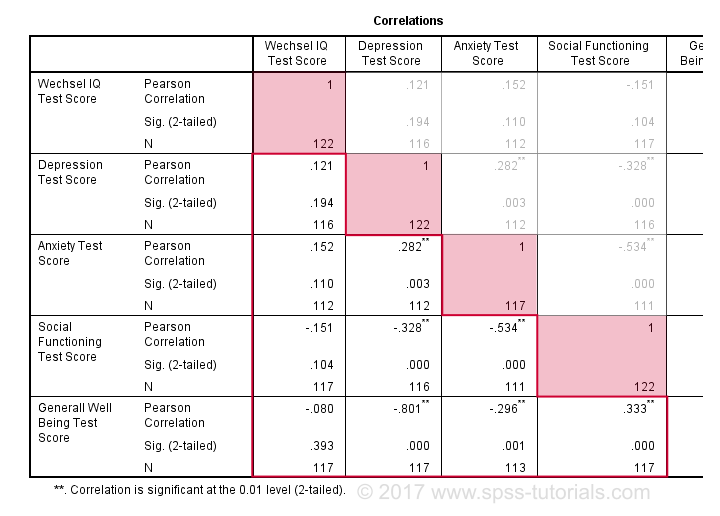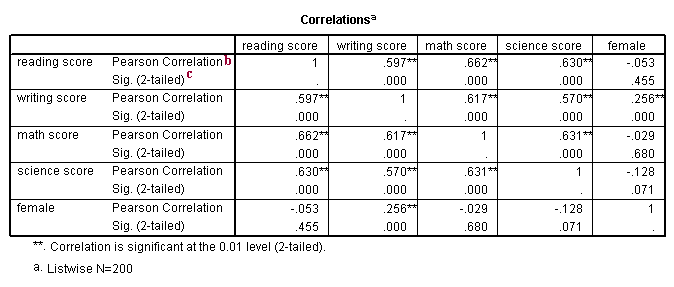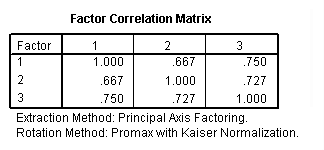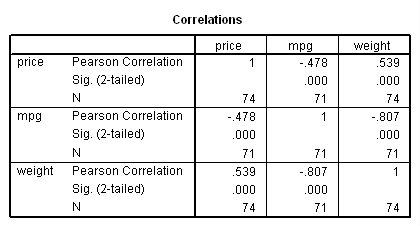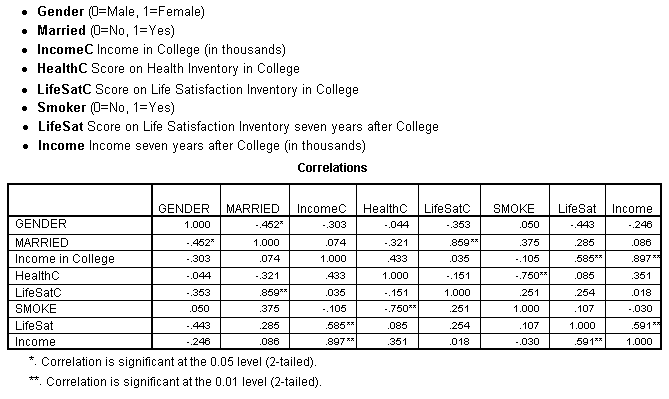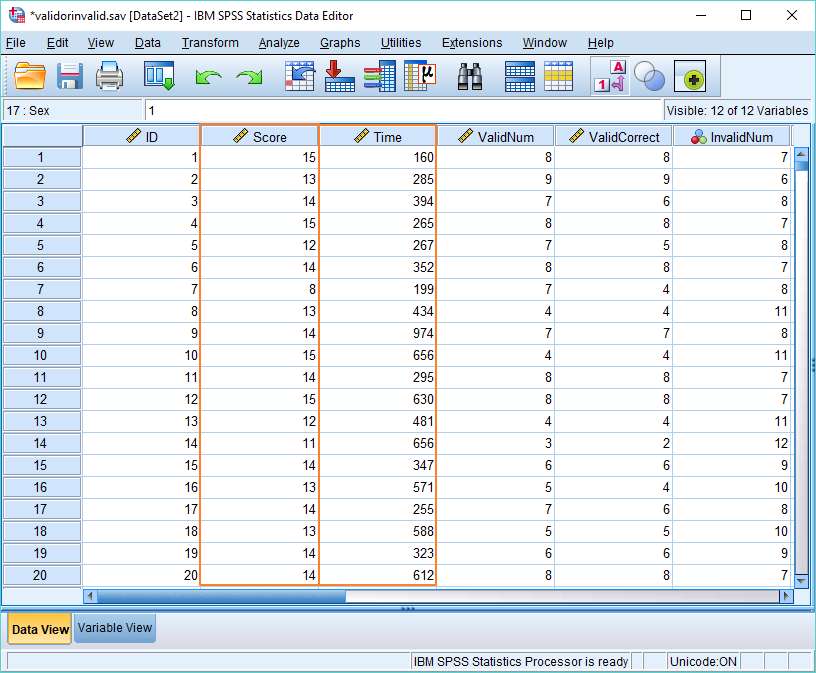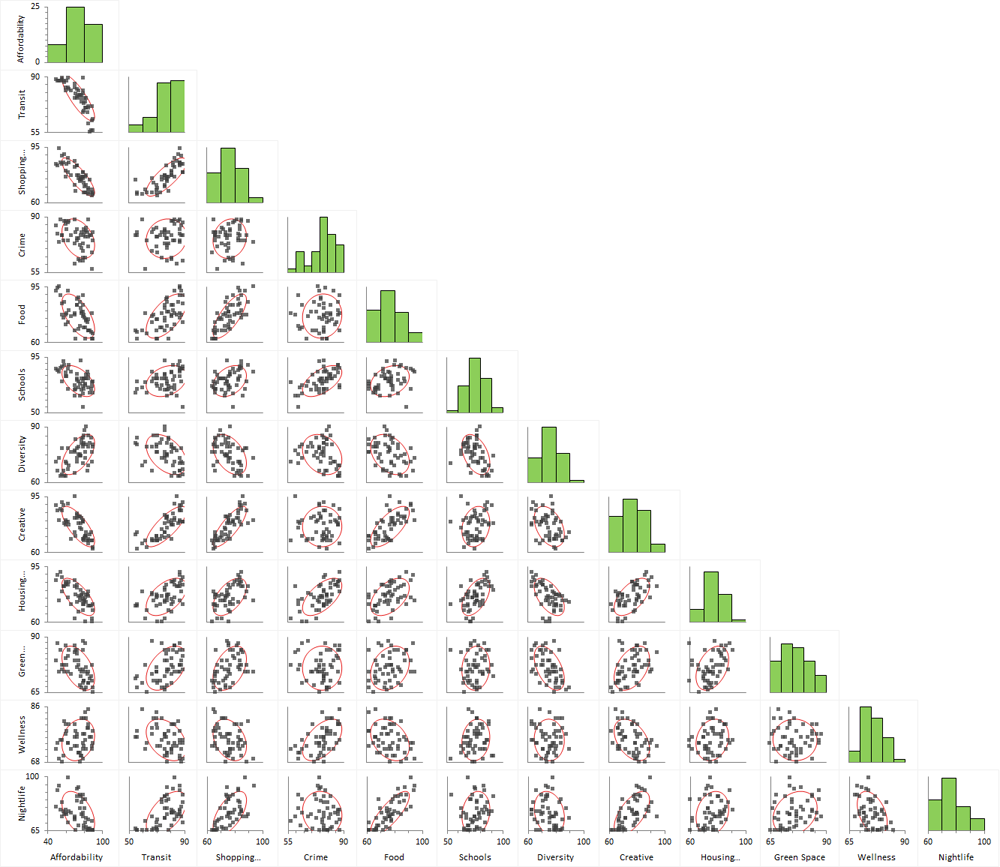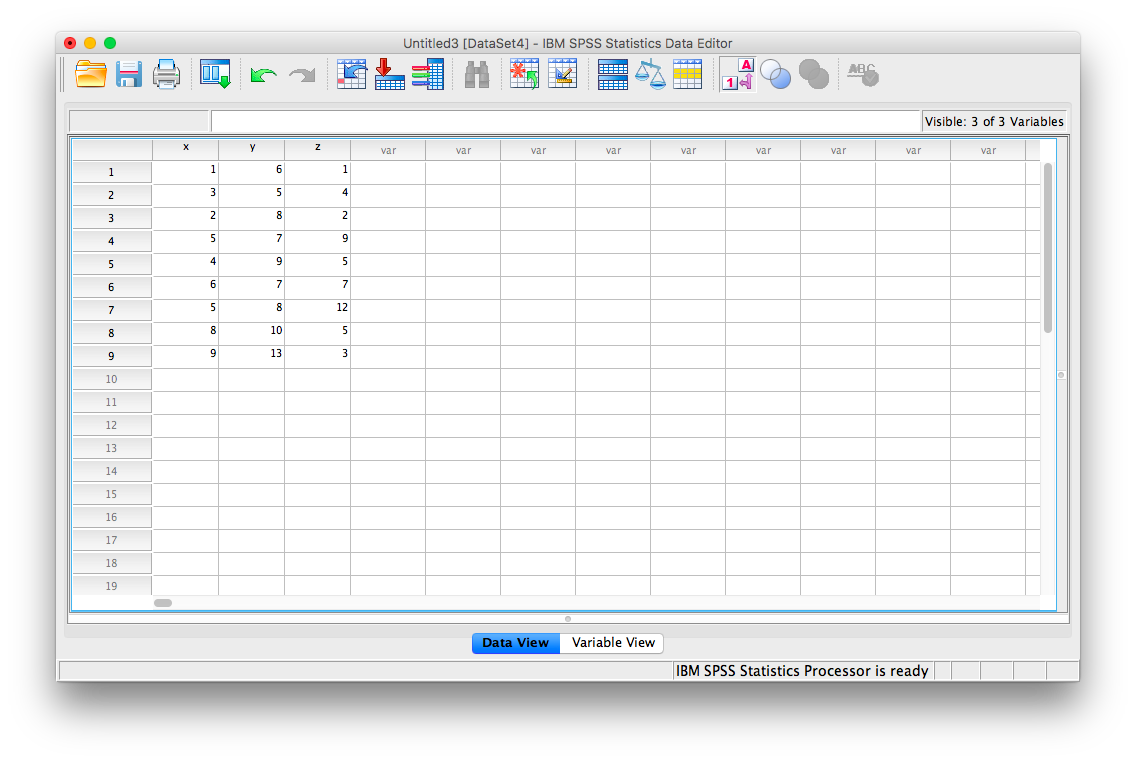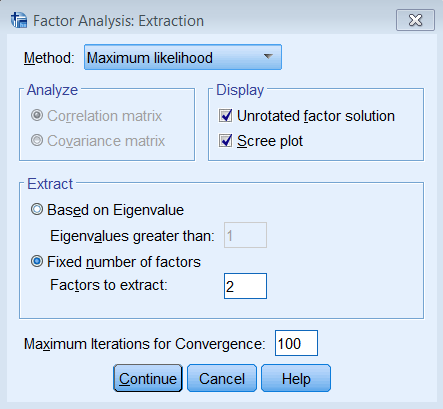How To Read Correlation Matrix Spss

When to use a correlation matrix.
How to read correlation matrix spss. Precede the correlation matrix with a matrix data command. Ordinal or ratio data or a combination must be used. To run a bivariate pearson correlation in spss click analyze correlate bivariate. Also place the data within begin data and end data commands.
0 means there is no linear correlation at all. Our figure of 094 indicates a very weak positive correlation. This tutorial explains how to create and interpret a correlation matrix in spss. That s the pearson correlation figure inside the square red box above which in this case is 094.
The determinant of the correlation matrix is shown at the foot of the table below. The bivariate correlations window opens where you will specify the variables to be used in the analysis. These data were collected on 200 high schools students and are scores on various tests including science math reading and social studies socst the variable female is a dichotomous variable coded 1 if the student was female and 0 if male. A correlation coefficient gets to zero the weaker the correlation is between the two variables.
Above and below the main diagonal. The 10 correlations below the diagonal are what we need. And sometimes a correlation matrix will be colored in like a heat map to make the correlation coefficients even easier to read. When your correlation matrix is in a text file the easiest way to have spss read it in a usable way is to open or copy the file to an spss syntax window and add the spss commands.
The correlations on the main diagonal are the correlations between each variable and itself which is why they are all 1 and not interesting at all. By default spss always creates a full correlation matrix. Click the analyze tab. With respect to correlation matrix if any pair of variables has a value less than 0 5 consider dropping one of them from the analysis by repeating the factor analysis test in spss by removing variables whose value is less than 0 5.
Pearson s r varies between 1 and 1 where 1 is a perfect positive correlation and 1 is a perfect negative correlation. All of the variables in your dataset appear in the list on the left side. A correlation matrix conveniently summarizes a dataset. The plot above shows the items variables in the rotated factor space.
How to create a correlation matrix in spss. This page shows an example correlation with footnotes explaining the output. Each correlation appears twice. Use the following steps to create a correlation matrix for this dataset that shows the average assists rebounds and points for eight basketball players.
Spss permits calculation of many correlations at a time and presents the results in a correlation matrix. The rest of the output shown below is part of the output generated by the spss syntax shown at the beginning of this page. The types of correlations we study do not use nominal data.
